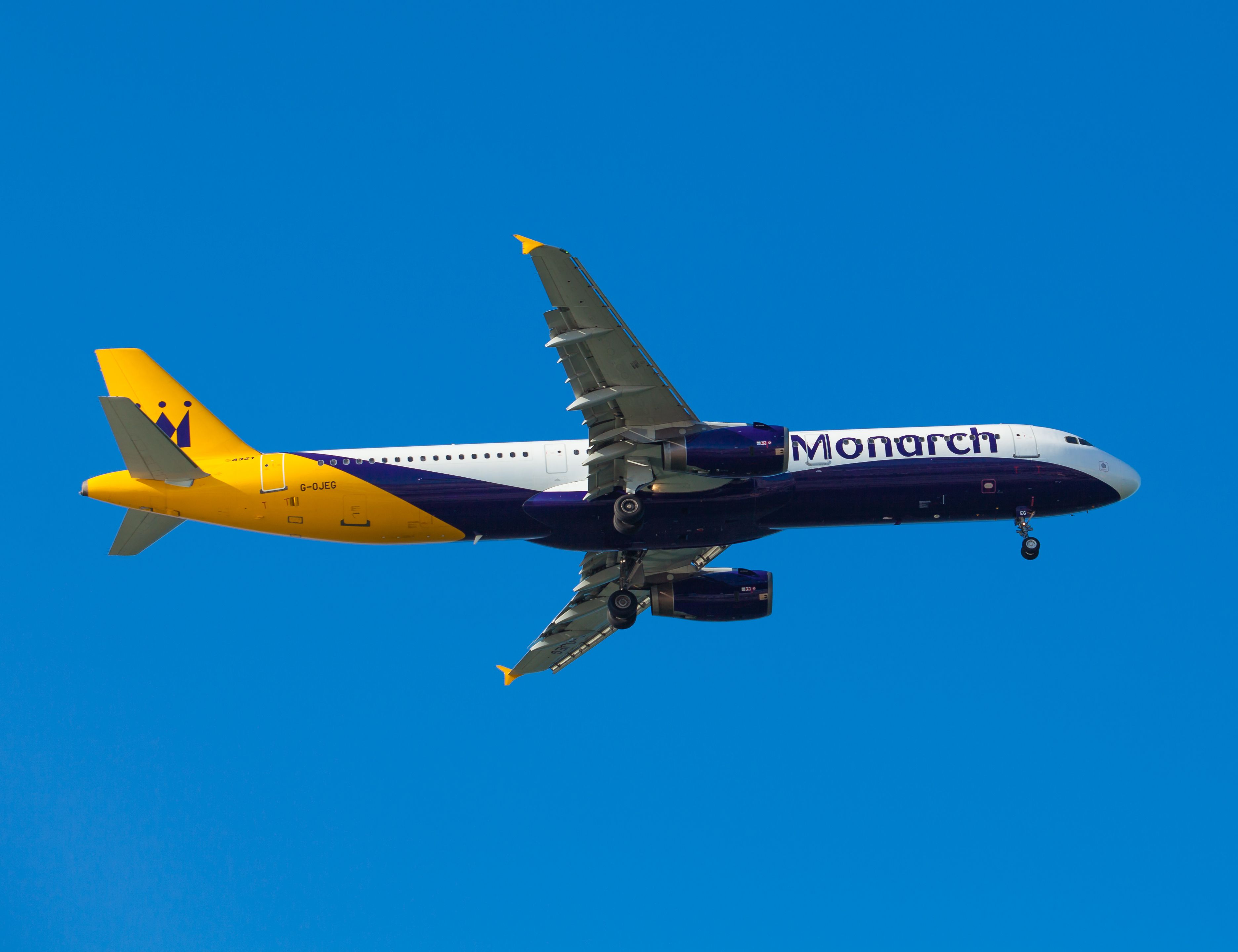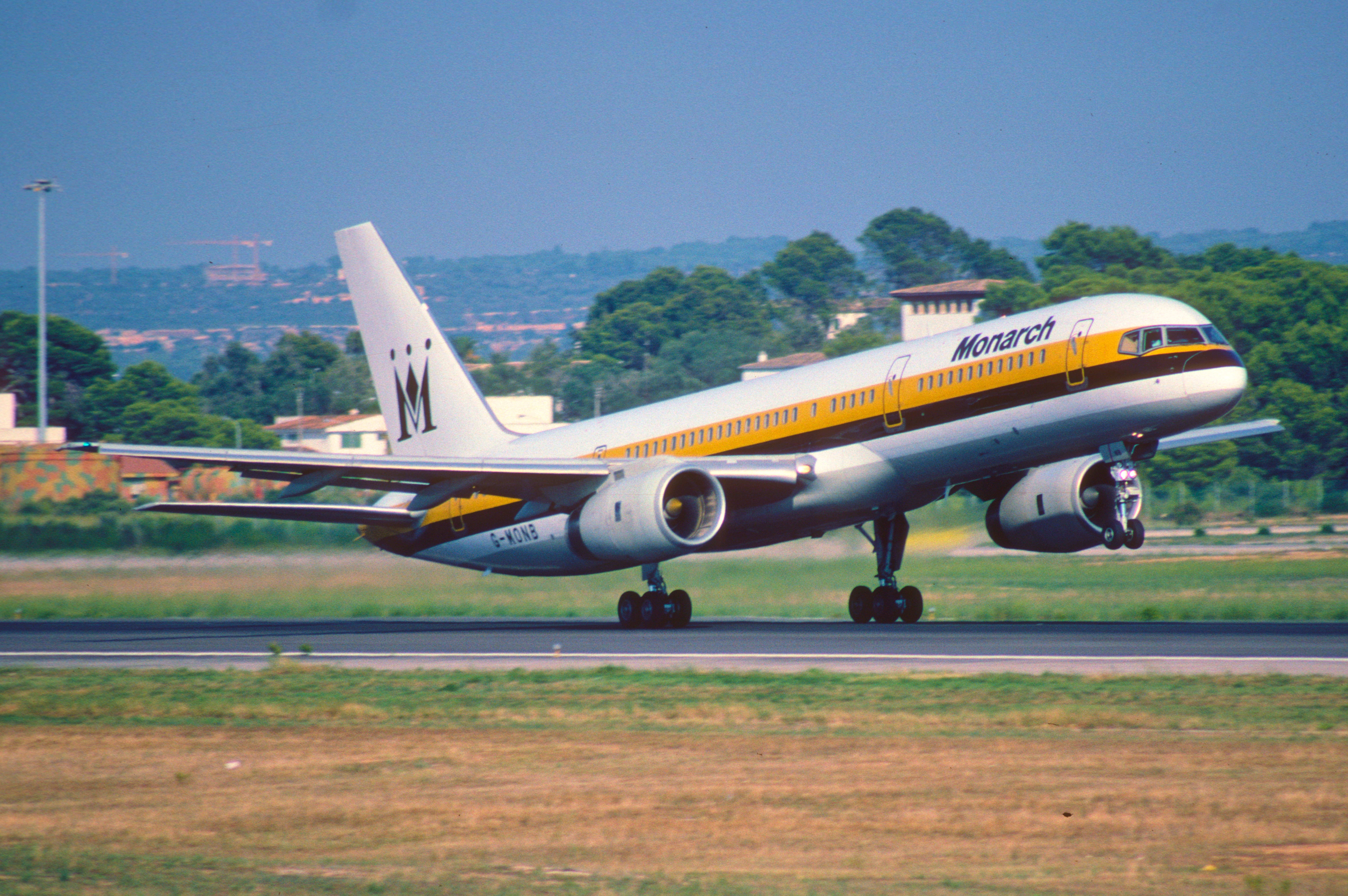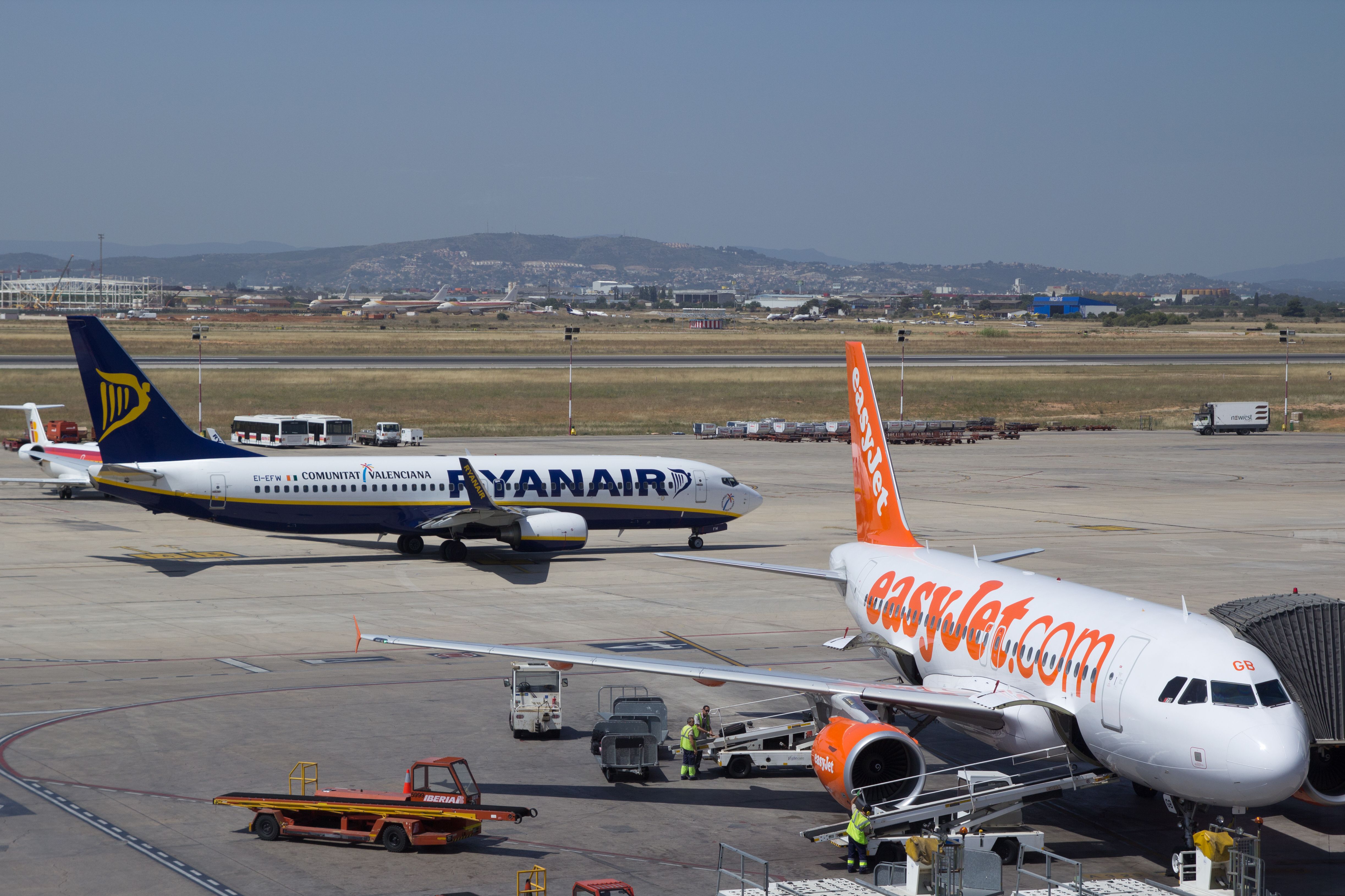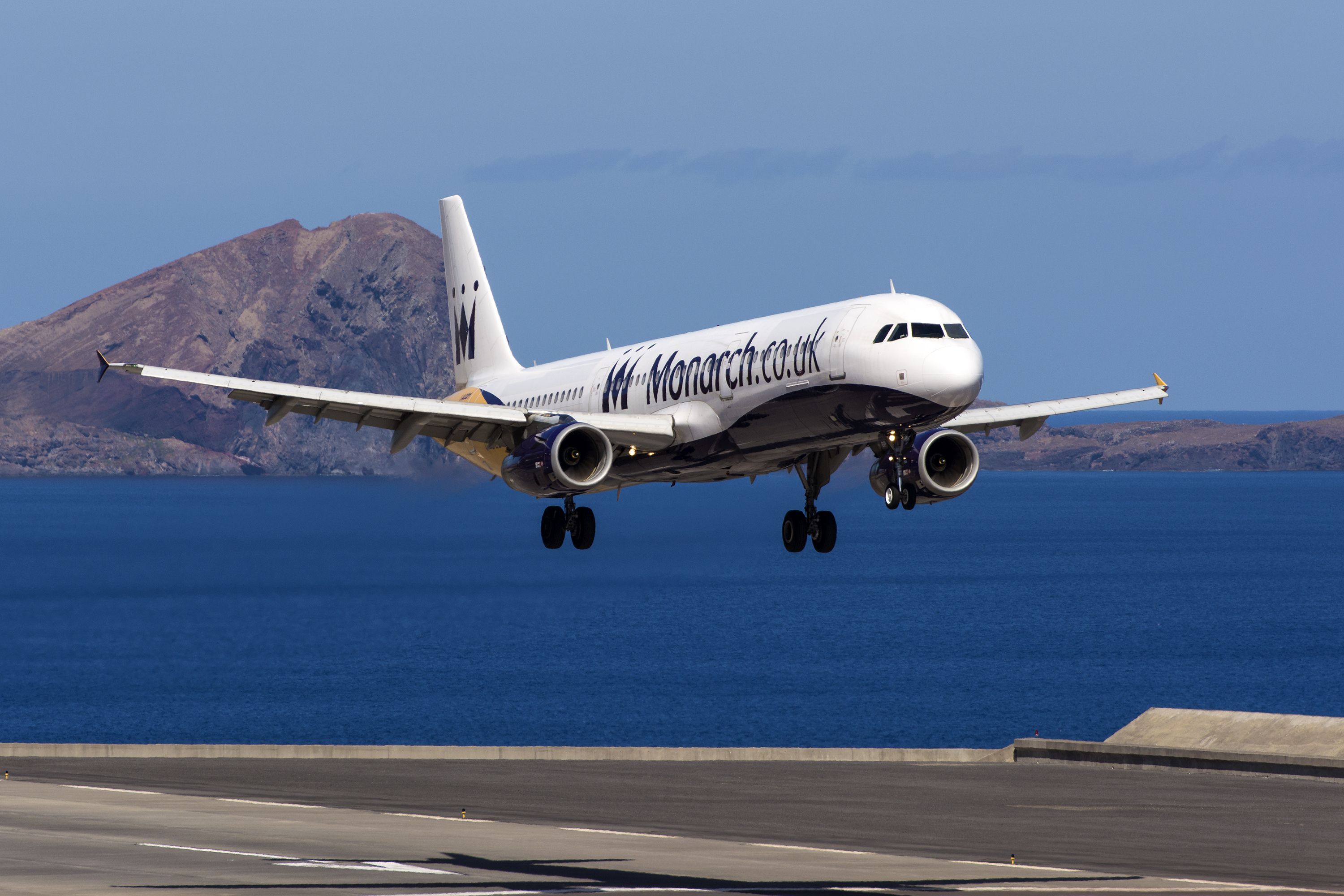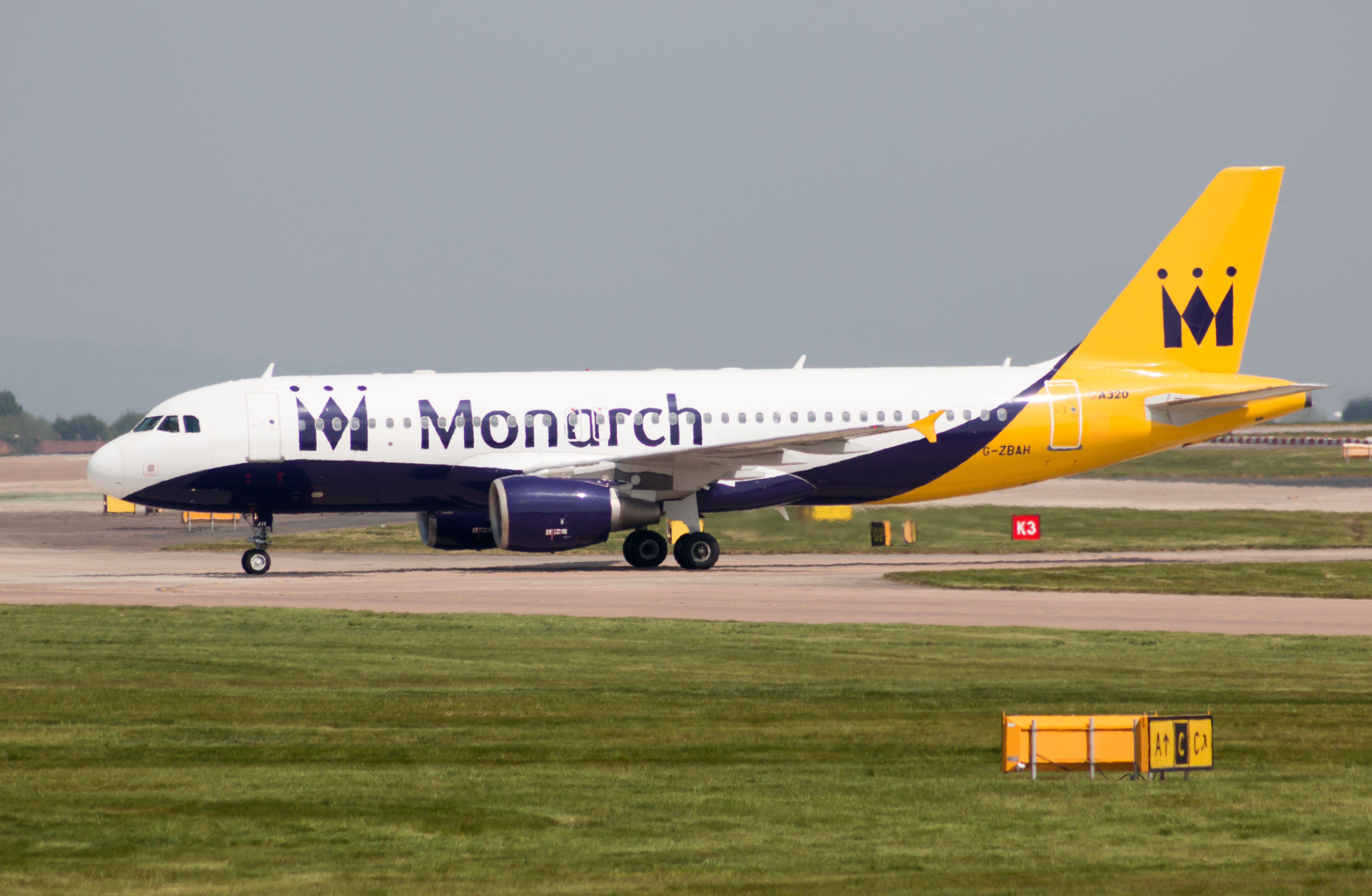Monarch Airlines, the low-cost carrier headquartered at London Luton Airport, ceased its operations back in 2017 after half a century in the business. The collapse dominated the headlines at the time, forcing the UK's biggest-ever peacetime repatriation effort to bring home tens of thousands of stranded holidaymakers. Let's look back at its history and what led to its collapse.
The early days
Bill Hodgson and Don Peacock were the heads behind Monarch's formation in the 1960s. They had both previously been directors of the UK-based British Eagle International Airlines. British Eagle also had a base at Luton Airport and began operations in 1948 with just five aircraft in its fleet. After 20 years in service, it was liquidated, surrendering its 24 aircraft and ceasing operations.
Check out our analysis of why Monarch Airlines was formed.
It was a defeat that didn't stop Hodgson and Peacock from creating an airline of their own. They founded Monarch Airlines in June 1967, backed by entrepreneur Sergio Mantegazza, and made a carrier that would take holidaymakers worldwide. Its routes included European, Asian, African, North American, and Caribbean destinations. Their plan of attack was unusual initially, as their vision for a low-cost airline came at a time when flying was namely for the rich.
Take off right on schedule
While its target market seemed, from the outset, to be unconventional, Monarch was just in time for the boom of the "package holiday." It took off - starting with a fleet of just two planes, Monarch grew in strength. It moved with the times, and when the independent holiday grew in popularity, Monarch listened to its customers. It started offering flights from Luton to Menorca, which began in 1985.
But since it no longer offered flights in an all-inclusive package, it entered another market: low-cost air travel. Unfortunately, this would directly conflict with other low-cost carriers, namely Ryanair and easyJet. It also started operating more services from other UK airports, including Gatwick, Manchester, and Birmingham, in the 2000s. While it had managed to survive the 2008 financial crisis, the pressure from low-cost airlines was mounting.
Too much low-cost competition
With passengers preferring to make independent travel arrangements, the airline began its battle to become the most desired option in low-cost air travel starting in the mid-2000s. The carrier rebranded itself away from the family-orientated holiday towards the broader holidaymaker market, with scheduled operations soon making up around 80% of its business.
The struggle for low-cost carriers always comes with selling enough add-ons to cover Air Passenger Duty. Naturally, this would have been a challenge Monarch had to face, but in 2011, the Arab Spring sent fuel prices soaring. It was yet another blow. Mantegazza made his final investment before turning the company over to private investment firm Greybull Capital.
Although the £125m investment was an attempt to save Monarch, it could not account for the contextual issues that inhibited it. Greybull Capital founder Marc Meyohas would tell the Daily Telegraph that a "bloody hurricane" of problems led to the airline's eventual collapse while claiming the European short-haul market had become a "bloodbath."
The airline made cuts on its long-haul routes, operating predominantly in Europe with fierce competition. Along with low-cost giants easyJet and Ryanair, the airline faced growing competition from the likes of Wizz Air and Vueling. In fact, it faced direct competition on 85% of its routes, and despite carrying 14% more passengers in 2016, it generated £100m less revenue due to slashing its prices.
Terrorism and Brexit
Things got worse for the beleaguered carrier when terrorist attacks struck some of Monarch's most popular destinations, like Egypt, Tunisia, and France, leading to a significant drop in demand for holiday flights to these destinations.
Adding to this was the impact of Brexit, which led to a depreciation of the pound. This meant UK airlines suddenly had to shell out a lot more in operating costs, not to mention the stock market impact - for example, rival easyJet estimated that the Brexit decision had cost it £90m in 2016 alone just from its share price drop. It also meant UK-based travelers had less spending power abroad, dissuading them from making holiday plans overseas.
Collapse in October 2017
Taking on the low-cost market proved too much for Monarch, and with 35 aircraft left in its fleet, the airline collapsed. On October 2nd, 2017, it ceased operations and left 110,000 passengers stranded abroad, with around 860,000 passengers affected overall.
At the time, Monarch was the biggest UK airline to fold, but this was eclipsed by Thomas Cook's collapse just two years later. The carrier served over 120 routes across 16 countries at its demise and maintained five bases at London Gatwick, Manchester, Birmingham, London Luton, and Leeds Bradford.
Its final flight would be Flight ZB3785 from Tel Aviv to Manchester, which landed in the UK at 03:19 on October 2nd, 2017, and would be the last time passengers flew on a Monarch-operated aircraft. UK-based charter airline TUI would be one of the beneficiaries of Monarch's collapse, immediately upping its capacity to cater to the sudden rise in demand.
TUI is now the largest charter airline in Europe, showing that package holiday business models can still succeed in the modern era. Leeds-based Jet2.com is also known for its package holidays and has grown to become the UK's third-largest carrier.
What became of Monarch's aircraft?
With over 30 planes in its possession at the time of its collapse, the majority of Monarch's fleet would find its way into the hands of lessors who had the financial means to buy them outright. The airline had purchased several of its A321 fleet new, including four Airbus A321s bought in 2013-14, which would make their way over to Thomas Cook.
Monarch had 25 Airbus A321s after folding, which would swiftly be snapped up by several lessors - these would then end up at a wide range of carriers, such as Aegean Airlines, Olympus Airways, and Ural Airlines. As for its Airbus A320 fleet, the airline had ten narrowbodies when it collapsed. They would find new homes with easyJet, Iberia, and Sunwing Airlines.
Were Monarch to have remained afloat, it had committed to purchasing up to 45 Boeing 737 MAX 8 jets in a deal worth around $4.8 billion at list prices. Following a restructuring in 2014, the airline committed to 30 MAXs and firmed up options for another 15 just months before folding.
Were you affected by Monarch's collapse? Would you like to see the airline still in operation? Let us know in the comments!
Source: Daily Telegraph

